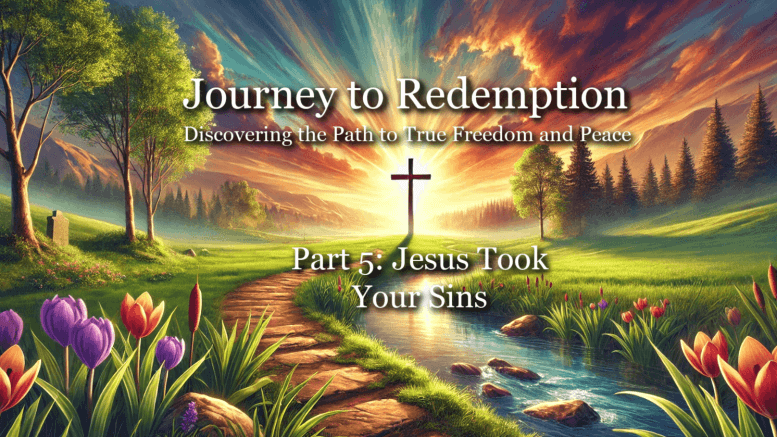Playback speed:
As we progress through our ‘Journey to Redemption,’ part five highlights how accepting salvation leads to a transformed and renewed life in Christ.
Healing Through His Stripes
The phrase “by whose stripes ye were healed” signifies the spiritual healing from Christ’s suffering. Additionally, this healing is not just physical but restores our relationship with God. Psalm 103:3 declares, “Who forgiveth all thine iniquities; who healeth all thy diseases.” Thus, this healing addresses both spiritual and physical needs.
Embracing Righteousness
Furthermore, salvation is available to all who seek it biblically. 1 John 1:9 assures us, “If we confess our sins, he is faithful and just to forgive us our sins, and to cleanse us from all unrighteousness.” Therefore, this promise highlights God’s faithfulness in forgiving and cleansing us when we repent.
Living a Transformed Life
As we progress through our ‘Journey to Redemption,’ part five highlights how accepting salvation leads to a transformed and renewed life in Christ.
Bible Verse: 1 Peter 2:24
“Who his own self bare our sins in his own body on the tree, that we, being dead to sins, should live unto righteousness: by whose stripes ye were healed.”
The Sacrificial Lamb, Jesus Died for Our Sins
As we go deeper into the theme of salvation, we focus on 1 Peter 2:24. It states, “Who his own self bare our sins in his own body on the tree, that we, being dead to sins, should live unto righteousness: by whose stripes ye were healed.” This verse highlights the substitutionary atonement of Christ and its transformative power in believers’ lives.
Peter emphasizes that Jesus bore our sins in His body on the cross. This act of bearing our sins signifies that the weight and penalty of sin were placed on Jesus. Isaiah 53:4-5 prophesies,
“Surely he hath borne our griefs, and carried our sorrows: yet we did esteem him stricken, smitten of God, and afflicted. But he was wounded for our transgressions, he was bruised for our iniquities: the chastisement of our peace was upon him; and with his stripes we are healed.”
This prophecy underscores the suffering and sacrifice Jesus endured for our sins.
Dead to Sins, Alive to Righteousness
John Calvin’s Commentary highlights the transformative power of Christ’s sacrifice, which enables believers to live a new life of righteousness. Through His death, Christ calls us to die to sin and live unto righteousness. Romans 6:6 echoes this concept,
“Knowing this, that our old man is crucified with him, that the body of sin might be destroyed, that henceforth we should not serve sin.”
The death of our sinful nature allows us to walk in the newness of life.
Conclusion
1 Peter 2:24 highlights Jesus Christ’s profound sacrifice. He bore our sins on the cross, allowing us to die to sin and live righteously. His suffering brings spiritual healing and restoration, transforming our lives. Let us embrace this truth, acknowledge our need for His sacrifice, and walk in the righteousness He provides.





